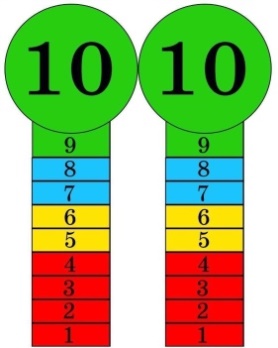
Short term plan: term 3
|
Unit: 5 Reading for pleasure |
Lesson 49 |
||
|
Teacher name: |
|
||
|
Date: |
|
||
|
Grade: 8 |
Number present: |
absent: |
|
|
Lesson title |
Twenty thousand leagues under the sea |
||
|
Learning objectives |
8.3.7.1 use appropriate subject-specific vocabulary and syntax to talk about a range of general topics, and some curricular topics 8.6.15.1 use infinitive forms after a limited number of verbs and adjectives; use gerund forms after a limited variety of verbs and prepositions; use some prepositional verbs and begin to use common phrasal verbs on a growing range of familiar general and curricular topics 8.5.1.1 plan, write, edit and proofread work at text level with little support on a range of general and curricular topics |
||
|
Lesson objectives |
Learners will be able to: - introduce the topic; to read for gist - identify what pictures show - listen and read for gist and specific information |
||
|
Value links |
Family – Family values are moral and ethical principles of typical family life, including sacrificing for loved ones, putting your loved ones first, and keeping your loved ones at the centre of your thoughts and actions. |
||
|
Plan |
|||
|
Stages / Time |
Teachers actions |
Students actions |
Assessment criteria |
Resources |
|
Beginning of the lesson Warming-up
3 min. Pre-learning «Brainstorming» method 7 min. |
Organization moment : 1.Greeting. Ask about the weather. The teacher sets the lesson objectives, letting students know what to anticipate from the lesson. Warming up Where are you from? How old are you? What color is it? How many students are there in class? What day of the week today? Lead – In
|
The aim: To develop pupils speaking skills and create friendly atmosphere Students of the class are listed. Students' attention is drawn to the lesson. Students say different words from the picture •Learners remember previous lesson vocabulary •Learners answer the questions |
The teacher to assess learners for their ability. “Good job! Well done!” Formative Assessment
Good job! Descriptor: - remembers the lesson passed Point 1 Assessment criteria Learners have met the learning objectives if they can talk about twenty thousand leagues under the sea |
Pictures worksheet Picture |
|
Middle of the lesson Presentation part. 30 min |
Ex:1 P:54 • Ask Ss to look at the picture of Jules Verne and elicit what, if anything, Ss know about him. • Then ask Ss to read the biography to find out. Ex: 2 P: 54 • Ask Ss to look at the pictures A-E and read through the descriptions 1-5. • Give Ss time to match them and check their answers Differentiation: «Verbal support» method is used to help Ss use new words in the sentences. Ex: 3 P: 54 • Play the recording. Ss listen and order the pictures. • Check Ss’ answers. Ex: 4 P: 54 • Elicit what, if anything, Ss know about the lost city of Atlantis. Then play the recording. Ss listen and follow the text in their books and answer the question. • Check Ss’ answers. Ex: 5 P: 54 • Ask Ss to read the stems of the sentences (1-4). • Give Ss time to read the extract and complete the task. • Check Ss’ answers around the class. Conclusion during the lesson some tasks differentiated by outcomes of the students and by their abilities. |
• Learners read the biography to find out. Answer the question ANSWERS Jules Verne wrote ‘Twenty Thousand Leagues Under the Sea’, ‘Around the World in Eighty Days’, and ‘Journey to the Centre of the Earth’. People call him the father of science fiction because he wrote about things that didn’t exist yet, like submarines and spaceships • Learners look at the pictures. Which shows: ANSWERS 1 B 2 C 3 E 4 D 5 A • Learners listen to an adaptation of the beginning of the story Twenty Thousand Leagues Under the Sea and put the pictures in the correct order ANSWERS 1 E 2 C 3 A 4 B 5 D • Learners listen and read the extract to find out. Answer the question ANSWERS The professor saw trees on the ocean floor, an underwater volcano, stone houses and ancient temples. • Learners read the extract again and complete the sentences ANSWERS 1 Red Sea 2 the deep mysterious Atlantic Ocean 3 temples 4 knew for sure |
Descriptor: - read the biography - answer the question Total: 2point
Self assessment Descriptor: - look at the pictures. - match them Total: 2 point Descriptor: - listen to an adaptation - put the pictures in the correct order Total: 2 point Descriptor: - put the pictures in the correct order - answer the question Total: 2 point. Descriptor: - read the extract - complete the sentences Total: 2 point. -Make CCQ questions Yes / No Total: 1 point. |
Card Worksheet Students book |
|
End of the lesson 5 min |
FEEDBACK Learners provide feedback on what they have learned at the lesson. Ex: P: Home task: Write the days |
|
Poster Success
|
|
Short term plan: term 3
|
Unit 5 Reading for pleasure |
Lesson 50 |
||
|
Teacher name: |
|
||
|
Date: |
|
||
|
Grade: 8 |
Number present: |
absent: |
|
|
Lesson title |
The lost city |
||
|
Learning objectives |
8.3.3.1 give an opinion at discourse level on a wide range of general and curricular topics 8.4.2.1 understand specific information and detail in texts on a growing range of general and curricular topics, including some extended texts 8.2.1.1 understand with little or no support the main points in extended talk on a wide range of general and curricular topics |
||
|
Lesson objectives |
Learners will be able to: - consolidate new vocabulary - identify a narrative type - predict what happens next in a story, to give an opinion |
||
|
Value links |
Loyalty – Loyalty might be a core personal value to you if you highly prize friends that are reliable and trustworthy. You might put your friends or chosen family first, always being there for them when they need you. |
||
|
Plan |
|||
|
Stages / Time |
Teachers actions |
Students actions |
Assessment criteria |
Resources |
|
Beginning of the lesson Warming-up
3 min Pre-learning «Brainstorming» method 7 min. |
Organization moment : 1.Greeting. Ask about the weather. The teacher sets the lesson objectives, letting students know what to anticipate from the lesson. Warming up Where are you from? How old are you? What color is it? How many students are there in class? What day of the week today? Ask a few pupils to stand up and stand in a row. Ask the rest of the class questions to revise the previous lesson. Lead – In
|
The aim: To develop pupils speaking skills and create friendly atmosphere Students of the class are listed. Students' attention is drawn to the lesson. Determines the topic and purpose of the lesson •Learners remember previous lesson vocabulary Students say different words from the picture Answer the question. |
The teacher to assess learners for their ability. “Good job! Well done!” Formative Assessment
Good job! Descriptor: - know daily routines vocabulary Point 1 Assessment criteria - Learners have met the learning objectives if they can talk about lost city |
Pictures worksheet Student’s book |
|
Middle of the lesson Presentation part. 30 min |
Ex:7 P:55 • Allow Ss time to look up the meanings of the words in the list in their dictionaries. • Elicit definitions from Ss around the class. • Then give Ss time to use them to complete the sentences. • Check Ss’ answers. Ex: 8 P: 55 • Read out the Study Skills box and explain the difference between a first-person narrative and a third-person narrative. • Elicit what type of narrative the text is and who narrates it. Ex: 9 P: 55 • Ask Ss to discuss the questions in small groups. • Monitor the activity around the class and then elicit answers from various groups. Differentiation: «Verbal support» method is used to help Ss use new words in the sentences. Ex: 10 P: 55 • Ask Ss to research the story online. • Play the video for Ss and elicit their comments. • Elicit who guessed correctly. Conclusion during the lesson some tasks differentiated by outcomes of the students and by their abilities. |
• Pupilscomplete the sentences. Use these words ANSWERS 1 escape 2 appeared 3 surrounded 4 moved 5 entered 6 produced • Pupils answer the question ANSWERS It is a first-person narrative narrated by Professor Aronnax • Pupils discuss in groups. What do you think happens next in the story? Do you think the three men will manage to escape? How? ANSWERS A: I think they will go on many adventures with Captain Nemo in the Nautilus, but they will not be allowed to leave. B: I think you’re right. Maybe they will travel all around the world. C: I think the men will escape in a small boat as they planned, but not for some time. etc Pupils research the whole story or watch the video. How close were your guesses? ANSWERS Ss’ own answers |
Descriptor: - complete the sentences - use these words Total: 2 point
Self assessment Descriptor: - answer the question Total: 1 point Descriptor: - discuss in groups. - answer the question Total: 2 point Descriptor: - research the whole story - watch the video Total: 2 point -Make CCQ questions Yes / No Total: 1 point Total: 10 point |
Card Worksheet Students book |
|
End of the lesson 5 min |
FEEDBACK Learners provide feedback on what they have learned at the lesson. Ex: P: Home task: Write the days |
|
Poster Success
|
|
Short term plan: term 3
|
Unit 5 Reading for pleasure |
Lesson 51 |
||
|
Teacher name: |
|
||
|
Date: |
|
||
|
Grade: 8 |
Number present: |
absent: |
|
|
Lesson title |
To the sea |
||
|
Learning objectives |
8.1.7.1 develop and sustain a consistent argument when speaking or writing 8.2.2.1 understand with little or no support most specific information in extended talk on a wide range of general and curricular topics 8.3.7.1 use appropriate subject-specific vocabulary and syntax to talk about a range of general topics, and some curricular topics |
||
|
Lesson objectives |
Learners will be able to: - introduce the topic - read for gist - listen and read for gist - present and practise phrasal verbs with go |
||
|
Value links |
Fairness – If you value fairness, you might be highly sensitive to situations at school or in the workplace where a teacher or a peer has exhibited favoritism or allowed someone to get away with living by a different set of rules to everyone else. |
||
|
Plan |
|||
|
Stages / Time |
Teachers actions |
Students actions |
Assessment criteria |
Resources |
|
Beginning of the lesson Warming-up
3 min Pre-learning «Brainstorming» method 7 min. |
Organization moment : 1.Greeting. Ask about the weather. The teacher sets the lesson objectives, letting students know what to anticipate from the lesson. Warming up Where are you from? How old are you? What color is it? How many students are there in class? What day of the week today? revise the vocabulary from the previous Lead – In
|
. The aim: To develop pupils speaking skills and create friendly atmosphere Efficiency: By wishing each other they feel better and feel the support of others Students of the class are listed. Students' attention is drawn to the lesson. • Learners remember previous lesson vocabulary Determines the topic and purpose of the lesson Students say different words from the picture |
The teacher to assess learners for their ability. “Good job! Well done!” Formative Assessment
Good job! Descriptor: - can tell the time Point 1 Assessment criteria - Learners have met the learning objectives if they can talk about author’s biography |
Pictures worksheet Picture |
|
Middle of the lesson Presentation part. 30 min |
Ex: 1a P: 56 • Elicit what animal is in the picture and elicit other sea mammals from around the class. Ex:1b P: 56 • Elicit answers to the questions from Ss around the class. Differentiation: «Verbal support» method is used to help Ss use new words in the sentences. Ex: 2 P: 56 • Ask Ss to read the biography and elicit an answer to the question. Ex: 3 P: 56 • Read out the question. • Play the recording. Ss listen and read the text to find out the answer. . Ex: 4 P: 57 • Give Ss time to read the text again and read the sentences and then mark them as true or false. • Check Ss’ answers. . Ex: 6 P: 57 • Read out the box and explain the task. • Give Ss time to use them to complete the sentences. • Check Ss' answers. Conclusion during the lesson some tasks differentiated by outcomes of the students and by their abilities. |
•Pupils answer the question. What is the animal in the picture? What do you know about it? Can you name any more marine mammals? ANSWERS The animal is a whale. Other sea mammals include dolphins, orca, seals and walruses •Pupils read the author’s biography. How do you think Melville’s own experiences helped him write Moby-Dick? ANSWERS Whaling is illegal in many countries these days because whales are endangered, but in the past whales were hunted for their meat and bones •Pupils listen and read to find out. Answer the question. ANSWERS He is not sure why he decided to go whaling. He wanted to be a sailor and get paid while exploring the sea. He usually went to sea on merchant ships, but he was excited by the idea of the great whale. •Pupils read the extract. Decide if the statements ANSWERS 1 T 3 F 5 T 2 T 4 F •Pupils read the box and complete the sentences ANSWERS 1 over 2 off 3 by 4 on |
Descriptor: - answer the question - name any more marine mammals Total: 2 point
Self assessment Descriptor: - read the author’s biography - answers to the questions Total: 2 point
Descriptor: - listen and read - answers to the questions Total: 2 point Descriptor: - read the extract - complete the sentences Total: 1 point -Make CCQ questions Yes / No Total: 1 point Total: 10 point |
Card Worksheet |
|
End of the lesson 5 min |
FEEDBACK Learners provide feedback on what they have learned at the lesson. Ex: Home task: |
|
Poster Success
|
|
Short term plan: 3
|
Unit5: |
Lesson 52 |
||
|
Teacher name: |
|
||
|
Date: |
|
||
|
Grade: 8 |
Number present: |
absent: |
|
|
Lesson title |
Kyz Zhybek |
||
|
Learning objectives |
8.6.17.1 use if / unless/ if only in second conditional clauses and wish [that] clauses [present reference]; use a growing variety of relative clauses including why clauses on a range of familiar general and curricular topics 8.5.3.1 write with moderate grammatical accuracy on a growing range of familiar general and curricular topics |
||
|
Lesson objectives |
Learners will be able to: - introduce the topic - listen and read for specific information - complete a graphic organiser; to identify adjectives |
||
|
Value links |
Honesty – You may highly value telling people the truth. This one gets tricky when being honest can be hurtful to others. So, a person who really puts honesty first might be the sort of person who will tell the truth even if it hurts to do so. |
||
|
Plan |
|||
|
Stages / Time |
Teachers actions |
Students actions |
Assessment criteria |
Resources |
|
Beginning of the lesson Warming-up
3 min Pre-learning «Brainstorming» method 7 min. |
Organization moment : 1.Greeting. Ask about the weather. The teacher sets the lesson objectives, letting students know what to anticipate from the lesson. Warming up Where are you from? How old are you? What color is it? How many students are there in class? What day of the week today? revise the language from the previous lesson Lead – In |
The aim: To develop pupils speaking skills and create friendly atmosphere Efficiency: By wishing each other they feel better and feel the support of others Students of the class are listed. Students' attention is drawn to the lesson. • Learners talk about daily routines previous lesson vocabulary Determines the topic and purpose of the lesson Students say different words from the picture |
The teacher to assess learners for their ability. “Good job! Well done!” Formative Assessment
Good job! Descriptor: - talk about daily routines Point 1 Assessment criteria - Learners have met the learning objectives if they can talk about Kyz Zhybek |
Pictures worksheet Student’s book |
|
Middle of the lesson Presentation part. 30 min |
Ex:1 P:58 • Ask Ss to look at the pictures. • Elicit what, if anything, they know about Kyz-Zhibek and the story. • Ask Ss to discuss what they know in pairs and then ask some Ss to tell the class. • Ask Ss to read the information box to find out more. Ex: 2 P: 58 • Read out the names. • Elicit Ss’ guesses as to how they relate to Kyz-Zhibek. • Play the recording. Ss listen and read the text and find out. Differentiation: «Verbal support» method is used to help Ss use new words in the sentences Ex: 3 P: 59 • Ask Ss to read the questions (1-4) and answer choices A-C. • Give Ss time to read the text and complete the task. • Check Ss’ answers around the class. Ex: 4 P: 59 • Ask Ss to copy the graphic organiser into their notebooks. • Then give them time to complete it with the adjectives the writer uses in the text. • Check Ss’ answers on the board. Ex: 6 P: 59 • Ask Ss to read the events and put them in the correct order referring back to the text as necessary. • Check Ss’ answers Conclusion during the lesson some tasks differentiated by outcomes of the students and by thir abilities. |
•Pupilslook at the picture and the title. Who is Kyz-Zhibek? What do you know about the story of Kyz-Zhibek? Discuss in pairs. ANSWERS Ss’ own answers •Pupils listen and read to find out. Answer the question. ANSWERS Tolegen is the man Kyz-Zhibek falls in love with. Bekezhan is the leader of Kyz-Zhibek’s tribe. Bazarbai is Tolegen’s father. •Pupils read the extract and choose the correct answer ANSWERS 1 B 2 A 3 C 4 A •Pupils complete the graphic organiser below with the adjectives the writer uses in the story to describe the characters ANSWERS CHARACTERS Kyz-Zhibek: intelligent, beautiful, famous, heartbroken Tolegen: handsome, young, strong-willed, beloved, Bekezhan: wicked, evil, •Pupils put the events in the order they happened. ANSWERS a 2 c 3 e 1 g 4 b 5 d 7 f 6 |
Descriptor: - look at the picture - discuss in pairs. Total: 2 point
Self assessment Descriptor: - listen and read - answer the question. Total: 2 point Descriptor: - read the extract - choose the correct answer Total: 2 point Descriptor: - complete the graphic organiser - describe the characters Total: 2point
Descriptor: - put the events in the order Total: 1 point
-Make CCQ questions Yes / No Total: 1 point Total: 10 point |
Card Worksheet Students book |
|
End of the lesson 5 min |
FEEDBACK Learners provide feedback on what they have learned at the lesson. Ex: Home task: |
|
Poster Success
|
|
жүктеу мүмкіндігіне ие боласыз
Бұл материал сайт қолданушысы жариялаған. Материалдың ішінде жазылған барлық ақпаратқа жауапкершілікті жариялаған қолданушы жауап береді. Ұстаз тілегі тек ақпаратты таратуға қолдау көрсетеді. Егер материал сіздің авторлық құқығыңызды бұзған болса немесе басқа да себептермен сайттан өшіру керек деп ойласаңыз осында жазыңыз
Excel 8 сынып бойынша 3-тоқсан ҚМЖ жинағы
Excel 8 сынып бойынша 3-тоқсан ҚМЖ жинағы
Short term plan: term 3
|
Unit: 5 Reading for pleasure |
Lesson 49 |
||
|
Teacher name: |
|
||
|
Date: |
|
||
|
Grade: 8 |
Number present: |
absent: |
|
|
Lesson title |
Twenty thousand leagues under the sea |
||
|
Learning objectives |
8.3.7.1 use appropriate subject-specific vocabulary and syntax to talk about a range of general topics, and some curricular topics 8.6.15.1 use infinitive forms after a limited number of verbs and adjectives; use gerund forms after a limited variety of verbs and prepositions; use some prepositional verbs and begin to use common phrasal verbs on a growing range of familiar general and curricular topics 8.5.1.1 plan, write, edit and proofread work at text level with little support on a range of general and curricular topics |
||
|
Lesson objectives |
Learners will be able to: - introduce the topic; to read for gist - identify what pictures show - listen and read for gist and specific information |
||
|
Value links |
Family – Family values are moral and ethical principles of typical family life, including sacrificing for loved ones, putting your loved ones first, and keeping your loved ones at the centre of your thoughts and actions. |
||
|
Plan |
|||
|
Stages / Time |
Teachers actions |
Students actions |
Assessment criteria |
Resources |
|
Beginning of the lesson Warming-up
3 min. Pre-learning «Brainstorming» method 7 min. |
Organization moment : 1.Greeting. Ask about the weather. The teacher sets the lesson objectives, letting students know what to anticipate from the lesson. Warming up Where are you from? How old are you? What color is it? How many students are there in class? What day of the week today? Lead – In
|
The aim: To develop pupils speaking skills and create friendly atmosphere Students of the class are listed. Students' attention is drawn to the lesson. Students say different words from the picture •Learners remember previous lesson vocabulary •Learners answer the questions |
The teacher to assess learners for their ability. “Good job! Well done!” Formative Assessment
Good job! Descriptor: - remembers the lesson passed Point 1 Assessment criteria Learners have met the learning objectives if they can talk about twenty thousand leagues under the sea |
Pictures worksheet Picture |
|
Middle of the lesson Presentation part. 30 min |
Ex:1 P:54 • Ask Ss to look at the picture of Jules Verne and elicit what, if anything, Ss know about him. • Then ask Ss to read the biography to find out. Ex: 2 P: 54 • Ask Ss to look at the pictures A-E and read through the descriptions 1-5. • Give Ss time to match them and check their answers Differentiation: «Verbal support» method is used to help Ss use new words in the sentences. Ex: 3 P: 54 • Play the recording. Ss listen and order the pictures. • Check Ss’ answers. Ex: 4 P: 54 • Elicit what, if anything, Ss know about the lost city of Atlantis. Then play the recording. Ss listen and follow the text in their books and answer the question. • Check Ss’ answers. Ex: 5 P: 54 • Ask Ss to read the stems of the sentences (1-4). • Give Ss time to read the extract and complete the task. • Check Ss’ answers around the class. Conclusion during the lesson some tasks differentiated by outcomes of the students and by their abilities. |
• Learners read the biography to find out. Answer the question ANSWERS Jules Verne wrote ‘Twenty Thousand Leagues Under the Sea’, ‘Around the World in Eighty Days’, and ‘Journey to the Centre of the Earth’. People call him the father of science fiction because he wrote about things that didn’t exist yet, like submarines and spaceships • Learners look at the pictures. Which shows: ANSWERS 1 B 2 C 3 E 4 D 5 A • Learners listen to an adaptation of the beginning of the story Twenty Thousand Leagues Under the Sea and put the pictures in the correct order ANSWERS 1 E 2 C 3 A 4 B 5 D • Learners listen and read the extract to find out. Answer the question ANSWERS The professor saw trees on the ocean floor, an underwater volcano, stone houses and ancient temples. • Learners read the extract again and complete the sentences ANSWERS 1 Red Sea 2 the deep mysterious Atlantic Ocean 3 temples 4 knew for sure |
Descriptor: - read the biography - answer the question Total: 2point
Self assessment Descriptor: - look at the pictures. - match them Total: 2 point Descriptor: - listen to an adaptation - put the pictures in the correct order Total: 2 point Descriptor: - put the pictures in the correct order - answer the question Total: 2 point. Descriptor: - read the extract - complete the sentences Total: 2 point. -Make CCQ questions Yes / No Total: 1 point. |
Card Worksheet Students book |
|
End of the lesson 5 min |
FEEDBACK Learners provide feedback on what they have learned at the lesson. Ex: P: Home task: Write the days |
|
Poster Success
|
|
Short term plan: term 3
|
Unit 5 Reading for pleasure |
Lesson 50 |
||
|
Teacher name: |
|
||
|
Date: |
|
||
|
Grade: 8 |
Number present: |
absent: |
|
|
Lesson title |
The lost city |
||
|
Learning objectives |
8.3.3.1 give an opinion at discourse level on a wide range of general and curricular topics 8.4.2.1 understand specific information and detail in texts on a growing range of general and curricular topics, including some extended texts 8.2.1.1 understand with little or no support the main points in extended talk on a wide range of general and curricular topics |
||
|
Lesson objectives |
Learners will be able to: - consolidate new vocabulary - identify a narrative type - predict what happens next in a story, to give an opinion |
||
|
Value links |
Loyalty – Loyalty might be a core personal value to you if you highly prize friends that are reliable and trustworthy. You might put your friends or chosen family first, always being there for them when they need you. |
||
|
Plan |
|||
|
Stages / Time |
Teachers actions |
Students actions |
Assessment criteria |
Resources |
|
Beginning of the lesson Warming-up
3 min Pre-learning «Brainstorming» method 7 min. |
Organization moment : 1.Greeting. Ask about the weather. The teacher sets the lesson objectives, letting students know what to anticipate from the lesson. Warming up Where are you from? How old are you? What color is it? How many students are there in class? What day of the week today? Ask a few pupils to stand up and stand in a row. Ask the rest of the class questions to revise the previous lesson. Lead – In
|
The aim: To develop pupils speaking skills and create friendly atmosphere Students of the class are listed. Students' attention is drawn to the lesson. Determines the topic and purpose of the lesson •Learners remember previous lesson vocabulary Students say different words from the picture Answer the question. |
The teacher to assess learners for their ability. “Good job! Well done!” Formative Assessment
Good job! Descriptor: - know daily routines vocabulary Point 1 Assessment criteria - Learners have met the learning objectives if they can talk about lost city |
Pictures worksheet Student’s book |
|
Middle of the lesson Presentation part. 30 min |
Ex:7 P:55 • Allow Ss time to look up the meanings of the words in the list in their dictionaries. • Elicit definitions from Ss around the class. • Then give Ss time to use them to complete the sentences. • Check Ss’ answers. Ex: 8 P: 55 • Read out the Study Skills box and explain the difference between a first-person narrative and a third-person narrative. • Elicit what type of narrative the text is and who narrates it. Ex: 9 P: 55 • Ask Ss to discuss the questions in small groups. • Monitor the activity around the class and then elicit answers from various groups. Differentiation: «Verbal support» method is used to help Ss use new words in the sentences. Ex: 10 P: 55 • Ask Ss to research the story online. • Play the video for Ss and elicit their comments. • Elicit who guessed correctly. Conclusion during the lesson some tasks differentiated by outcomes of the students and by their abilities. |
• Pupilscomplete the sentences. Use these words ANSWERS 1 escape 2 appeared 3 surrounded 4 moved 5 entered 6 produced • Pupils answer the question ANSWERS It is a first-person narrative narrated by Professor Aronnax • Pupils discuss in groups. What do you think happens next in the story? Do you think the three men will manage to escape? How? ANSWERS A: I think they will go on many adventures with Captain Nemo in the Nautilus, but they will not be allowed to leave. B: I think you’re right. Maybe they will travel all around the world. C: I think the men will escape in a small boat as they planned, but not for some time. etc Pupils research the whole story or watch the video. How close were your guesses? ANSWERS Ss’ own answers |
Descriptor: - complete the sentences - use these words Total: 2 point
Self assessment Descriptor: - answer the question Total: 1 point Descriptor: - discuss in groups. - answer the question Total: 2 point Descriptor: - research the whole story - watch the video Total: 2 point -Make CCQ questions Yes / No Total: 1 point Total: 10 point |
Card Worksheet Students book |
|
End of the lesson 5 min |
FEEDBACK Learners provide feedback on what they have learned at the lesson. Ex: P: Home task: Write the days |
|
Poster Success
|
|
Short term plan: term 3
|
Unit 5 Reading for pleasure |
Lesson 51 |
||
|
Teacher name: |
|
||
|
Date: |
|
||
|
Grade: 8 |
Number present: |
absent: |
|
|
Lesson title |
To the sea |
||
|
Learning objectives |
8.1.7.1 develop and sustain a consistent argument when speaking or writing 8.2.2.1 understand with little or no support most specific information in extended talk on a wide range of general and curricular topics 8.3.7.1 use appropriate subject-specific vocabulary and syntax to talk about a range of general topics, and some curricular topics |
||
|
Lesson objectives |
Learners will be able to: - introduce the topic - read for gist - listen and read for gist - present and practise phrasal verbs with go |
||
|
Value links |
Fairness – If you value fairness, you might be highly sensitive to situations at school or in the workplace where a teacher or a peer has exhibited favoritism or allowed someone to get away with living by a different set of rules to everyone else. |
||
|
Plan |
|||
|
Stages / Time |
Teachers actions |
Students actions |
Assessment criteria |
Resources |
|
Beginning of the lesson Warming-up
3 min Pre-learning «Brainstorming» method 7 min. |
Organization moment : 1.Greeting. Ask about the weather. The teacher sets the lesson objectives, letting students know what to anticipate from the lesson. Warming up Where are you from? How old are you? What color is it? How many students are there in class? What day of the week today? revise the vocabulary from the previous Lead – In
|
. The aim: To develop pupils speaking skills and create friendly atmosphere Efficiency: By wishing each other they feel better and feel the support of others Students of the class are listed. Students' attention is drawn to the lesson. • Learners remember previous lesson vocabulary Determines the topic and purpose of the lesson Students say different words from the picture |
The teacher to assess learners for their ability. “Good job! Well done!” Formative Assessment
Good job! Descriptor: - can tell the time Point 1 Assessment criteria - Learners have met the learning objectives if they can talk about author’s biography |
Pictures worksheet Picture |
|
Middle of the lesson Presentation part. 30 min |
Ex: 1a P: 56 • Elicit what animal is in the picture and elicit other sea mammals from around the class. Ex:1b P: 56 • Elicit answers to the questions from Ss around the class. Differentiation: «Verbal support» method is used to help Ss use new words in the sentences. Ex: 2 P: 56 • Ask Ss to read the biography and elicit an answer to the question. Ex: 3 P: 56 • Read out the question. • Play the recording. Ss listen and read the text to find out the answer. . Ex: 4 P: 57 • Give Ss time to read the text again and read the sentences and then mark them as true or false. • Check Ss’ answers. . Ex: 6 P: 57 • Read out the box and explain the task. • Give Ss time to use them to complete the sentences. • Check Ss' answers. Conclusion during the lesson some tasks differentiated by outcomes of the students and by their abilities. |
•Pupils answer the question. What is the animal in the picture? What do you know about it? Can you name any more marine mammals? ANSWERS The animal is a whale. Other sea mammals include dolphins, orca, seals and walruses •Pupils read the author’s biography. How do you think Melville’s own experiences helped him write Moby-Dick? ANSWERS Whaling is illegal in many countries these days because whales are endangered, but in the past whales were hunted for their meat and bones •Pupils listen and read to find out. Answer the question. ANSWERS He is not sure why he decided to go whaling. He wanted to be a sailor and get paid while exploring the sea. He usually went to sea on merchant ships, but he was excited by the idea of the great whale. •Pupils read the extract. Decide if the statements ANSWERS 1 T 3 F 5 T 2 T 4 F •Pupils read the box and complete the sentences ANSWERS 1 over 2 off 3 by 4 on |
Descriptor: - answer the question - name any more marine mammals Total: 2 point
Self assessment Descriptor: - read the author’s biography - answers to the questions Total: 2 point
Descriptor: - listen and read - answers to the questions Total: 2 point Descriptor: - read the extract - complete the sentences Total: 1 point -Make CCQ questions Yes / No Total: 1 point Total: 10 point |
Card Worksheet |
|
End of the lesson 5 min |
FEEDBACK Learners provide feedback on what they have learned at the lesson. Ex: Home task: |
|
Poster Success
|
|
Short term plan: 3
|
Unit5: |
Lesson 52 |
||
|
Teacher name: |
|
||
|
Date: |
|
||
|
Grade: 8 |
Number present: |
absent: |
|
|
Lesson title |
Kyz Zhybek |
||
|
Learning objectives |
8.6.17.1 use if / unless/ if only in second conditional clauses and wish [that] clauses [present reference]; use a growing variety of relative clauses including why clauses on a range of familiar general and curricular topics 8.5.3.1 write with moderate grammatical accuracy on a growing range of familiar general and curricular topics |
||
|
Lesson objectives |
Learners will be able to: - introduce the topic - listen and read for specific information - complete a graphic organiser; to identify adjectives |
||
|
Value links |
Honesty – You may highly value telling people the truth. This one gets tricky when being honest can be hurtful to others. So, a person who really puts honesty first might be the sort of person who will tell the truth even if it hurts to do so. |
||
|
Plan |
|||
|
Stages / Time |
Teachers actions |
Students actions |
Assessment criteria |
Resources |
|
Beginning of the lesson Warming-up
3 min Pre-learning «Brainstorming» method 7 min. |
Organization moment : 1.Greeting. Ask about the weather. The teacher sets the lesson objectives, letting students know what to anticipate from the lesson. Warming up Where are you from? How old are you? What color is it? How many students are there in class? What day of the week today? revise the language from the previous lesson Lead – In |
The aim: To develop pupils speaking skills and create friendly atmosphere Efficiency: By wishing each other they feel better and feel the support of others Students of the class are listed. Students' attention is drawn to the lesson. • Learners talk about daily routines previous lesson vocabulary Determines the topic and purpose of the lesson Students say different words from the picture |
The teacher to assess learners for their ability. “Good job! Well done!” Formative Assessment
Good job! Descriptor: - talk about daily routines Point 1 Assessment criteria - Learners have met the learning objectives if they can talk about Kyz Zhybek |
Pictures worksheet Student’s book |
|
Middle of the lesson Presentation part. 30 min |
Ex:1 P:58 • Ask Ss to look at the pictures. • Elicit what, if anything, they know about Kyz-Zhibek and the story. • Ask Ss to discuss what they know in pairs and then ask some Ss to tell the class. • Ask Ss to read the information box to find out more. Ex: 2 P: 58 • Read out the names. • Elicit Ss’ guesses as to how they relate to Kyz-Zhibek. • Play the recording. Ss listen and read the text and find out. Differentiation: «Verbal support» method is used to help Ss use new words in the sentences Ex: 3 P: 59 • Ask Ss to read the questions (1-4) and answer choices A-C. • Give Ss time to read the text and complete the task. • Check Ss’ answers around the class. Ex: 4 P: 59 • Ask Ss to copy the graphic organiser into their notebooks. • Then give them time to complete it with the adjectives the writer uses in the text. • Check Ss’ answers on the board. Ex: 6 P: 59 • Ask Ss to read the events and put them in the correct order referring back to the text as necessary. • Check Ss’ answers Conclusion during the lesson some tasks differentiated by outcomes of the students and by thir abilities. |
•Pupilslook at the picture and the title. Who is Kyz-Zhibek? What do you know about the story of Kyz-Zhibek? Discuss in pairs. ANSWERS Ss’ own answers •Pupils listen and read to find out. Answer the question. ANSWERS Tolegen is the man Kyz-Zhibek falls in love with. Bekezhan is the leader of Kyz-Zhibek’s tribe. Bazarbai is Tolegen’s father. •Pupils read the extract and choose the correct answer ANSWERS 1 B 2 A 3 C 4 A •Pupils complete the graphic organiser below with the adjectives the writer uses in the story to describe the characters ANSWERS CHARACTERS Kyz-Zhibek: intelligent, beautiful, famous, heartbroken Tolegen: handsome, young, strong-willed, beloved, Bekezhan: wicked, evil, •Pupils put the events in the order they happened. ANSWERS a 2 c 3 e 1 g 4 b 5 d 7 f 6 |
Descriptor: - look at the picture - discuss in pairs. Total: 2 point
Self assessment Descriptor: - listen and read - answer the question. Total: 2 point Descriptor: - read the extract - choose the correct answer Total: 2 point Descriptor: - complete the graphic organiser - describe the characters Total: 2point
Descriptor: - put the events in the order Total: 1 point
-Make CCQ questions Yes / No Total: 1 point Total: 10 point |
Card Worksheet Students book |
|
End of the lesson 5 min |
FEEDBACK Learners provide feedback on what they have learned at the lesson. Ex: Home task: |
|
Poster Success
|
|

шағым қалдыра аласыз


























